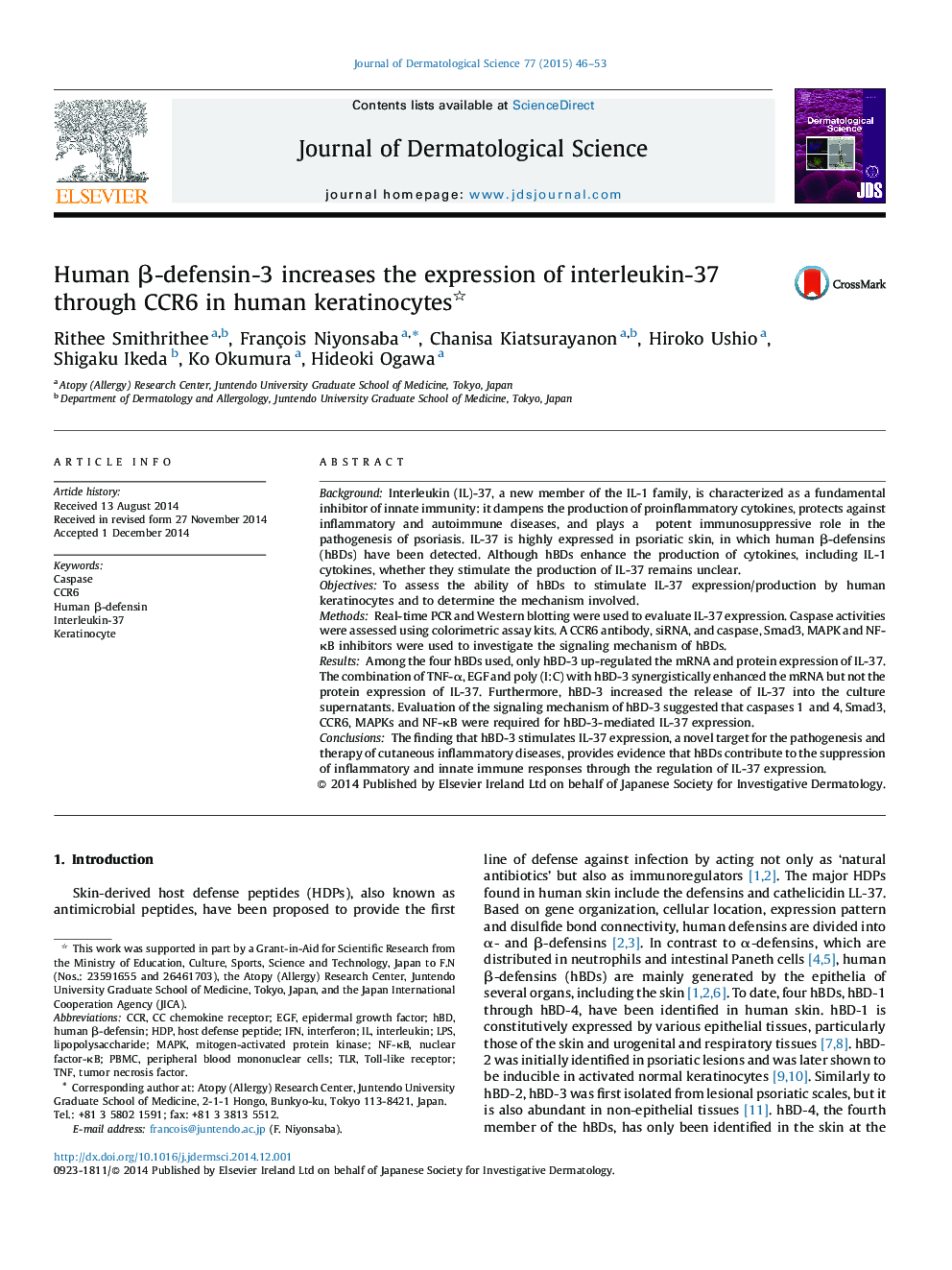| Article ID | Journal | Published Year | Pages | File Type |
|---|---|---|---|---|
| 3212599 | Journal of Dermatological Science | 2015 | 8 Pages |
•We report that hBD-3 induces IL-37 expression/release.•IL-37 expression is via CCR6, caspase and Smad3 activation.•IL-37 expression is also via MAPK and NF-κB activation.•hBD-3 may contribute to the suppression of inflammation.
BackgroundInterleukin (IL)-37, a new member of the IL-1 family, is characterized as a fundamental inhibitor of innate immunity: it dampens the production of proinflammatory cytokines, protects against inflammatory and autoimmune diseases, and plays a potent immunosuppressive role in the pathogenesis of psoriasis. IL-37 is highly expressed in psoriatic skin, in which human β-defensins (hBDs) have been detected. Although hBDs enhance the production of cytokines, including IL-1 cytokines, whether they stimulate the production of IL-37 remains unclear.ObjectivesTo assess the ability of hBDs to stimulate IL-37 expression/production by human keratinocytes and to determine the mechanism involved.MethodsReal-time PCR and Western blotting were used to evaluate IL-37 expression. Caspase activities were assessed using colorimetric assay kits. A CCR6 antibody, siRNA, and caspase, Smad3, MAPK and NF-κB inhibitors were used to investigate the signaling mechanism of hBDs.ResultsAmong the four hBDs used, only hBD-3 up-regulated the mRNA and protein expression of IL-37. The combination of TNF-α, EGF and poly (I:C) with hBD-3 synergistically enhanced the mRNA but not the protein expression of IL-37. Furthermore, hBD-3 increased the release of IL-37 into the culture supernatants. Evaluation of the signaling mechanism of hBD-3 suggested that caspases 1 and 4, Smad3, CCR6, MAPKs and NF-κB were required for hBD-3-mediated IL-37 expression.ConclusionsThe finding that hBD-3 stimulates IL-37 expression, a novel target for the pathogenesis and therapy of cutaneous inflammatory diseases, provides evidence that hBDs contribute to the suppression of inflammatory and innate immune responses through the regulation of IL-37 expression.
